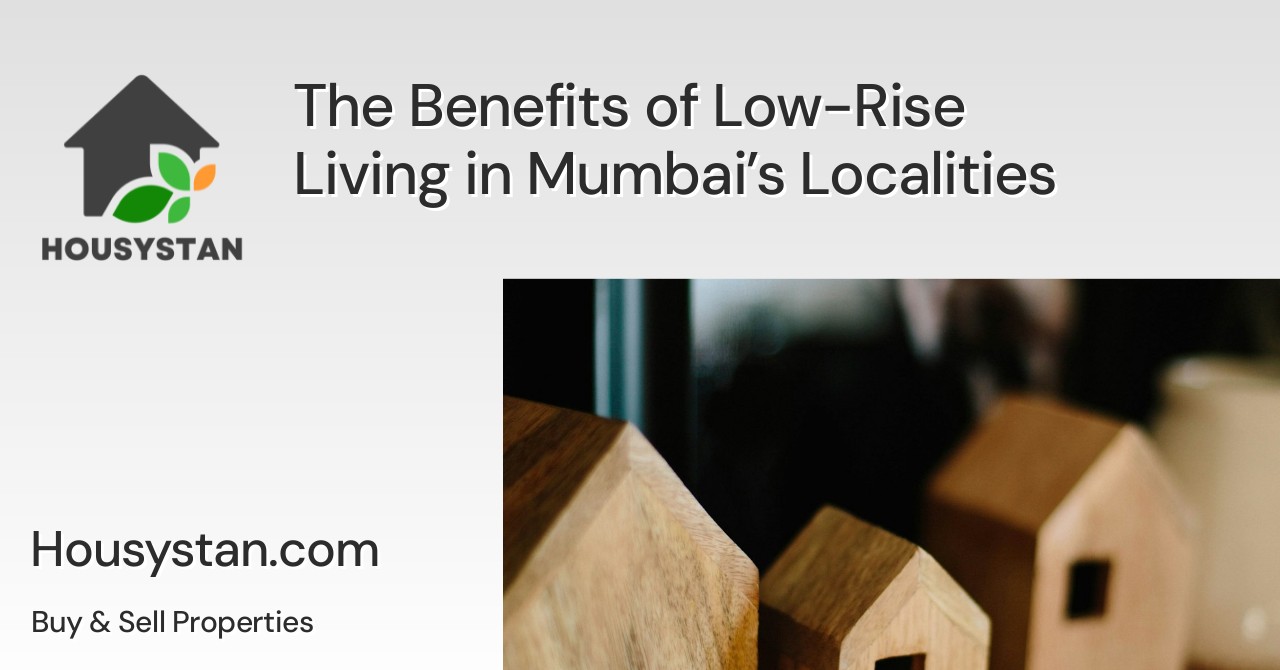The Benefits of Low-Rise Living in Mumbai’s Localities
Read latest blogs and articles from Housystan

The Information mentioned here was last updated on:
28/12/2025Choosing low-rise living in Mumbai’s vibrant neighborhoods offers a unique blend of comfort, community, and convenience, making it an appealing option for many homebuyers and investors. As Mumbai continues to expand vertically, low-rise residential buildings stand out for their distinctive advantages, particularly in well-established localities such as Bandra, Juhu, Santacruz, and Chembur. These areas have become synonymous with premium lifestyles, where residents appreciate a harmonious balance between urban amenities and a peaceful environment.
One of the most significant benefits of low-rise living in Mumbai is the enhanced sense of community. Smaller buildings typically house fewer families, fostering closer relationships among neighbors and encouraging a supportive social atmosphere. This close-knit environment is especially valued by families and individuals seeking security and camaraderie within the bustling city.
Another advantage of low-rise residences is the abundance of natural light and improved ventilation. Unlike high-rise towers, these structures are often surrounded by greenery, gardens, or open spaces. Residents enjoy better air quality and a refreshing ambiance, which contributes to overall well-being. Many low-rise apartments in Mumbai’s sought-after localities are thoughtfully designed to maximize these benefits, ensuring healthier and more comfortable living experiences.
- Verified Tenants/Buyers
- Unlimited Property Listing
- Zero subscription/charges fee
Low-rise homes also offer greater privacy and exclusivity. With fewer occupants per floor and less foot traffic, residents experience a tranquil atmosphere that is difficult to find in high-density skyscrapers. Additionally, these buildings often feature dedicated parking, private terraces, or balconies, allowing homeowners to enjoy personal outdoor spaces—a rare luxury in Mumbai’s urban landscape.
Location plays a crucial role in enhancing the appeal of low-rise properties. Proximity to renowned schools, healthcare centers, shopping destinations, and recreational hubs is a common feature of such developments in places like Khar, Powai, and Andheri West. Easy access to essential infrastructure and connectivity to major business districts further increases the desirability of these residences for working professionals and families alike.
In conclusion, low-rise living in Mumbai’s established neighborhoods offers unparalleled advantages, from fostering strong communities to providing a serene, healthy lifestyle. For those prioritizing comfort, privacy, and accessibility within the city, investing in a low-rise home remains a wise and rewarding choice.